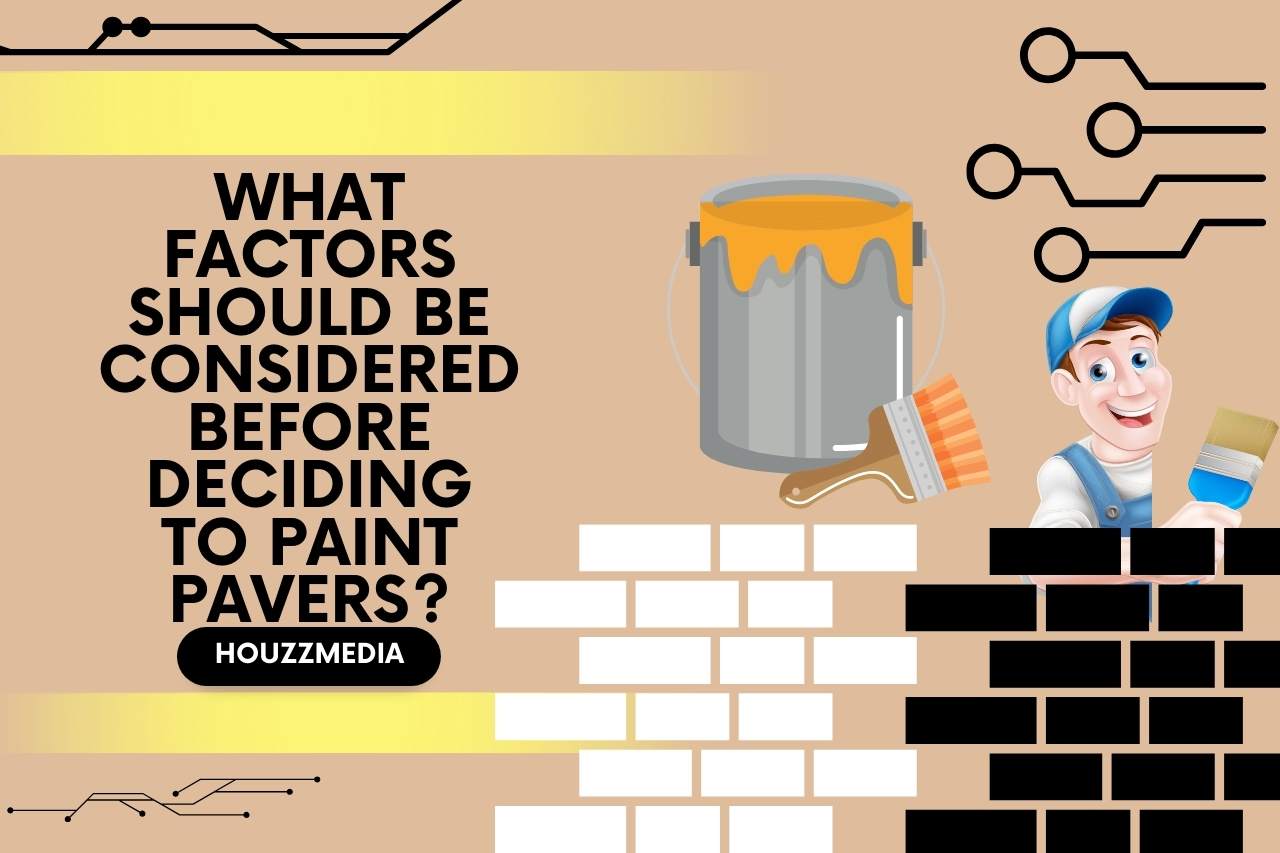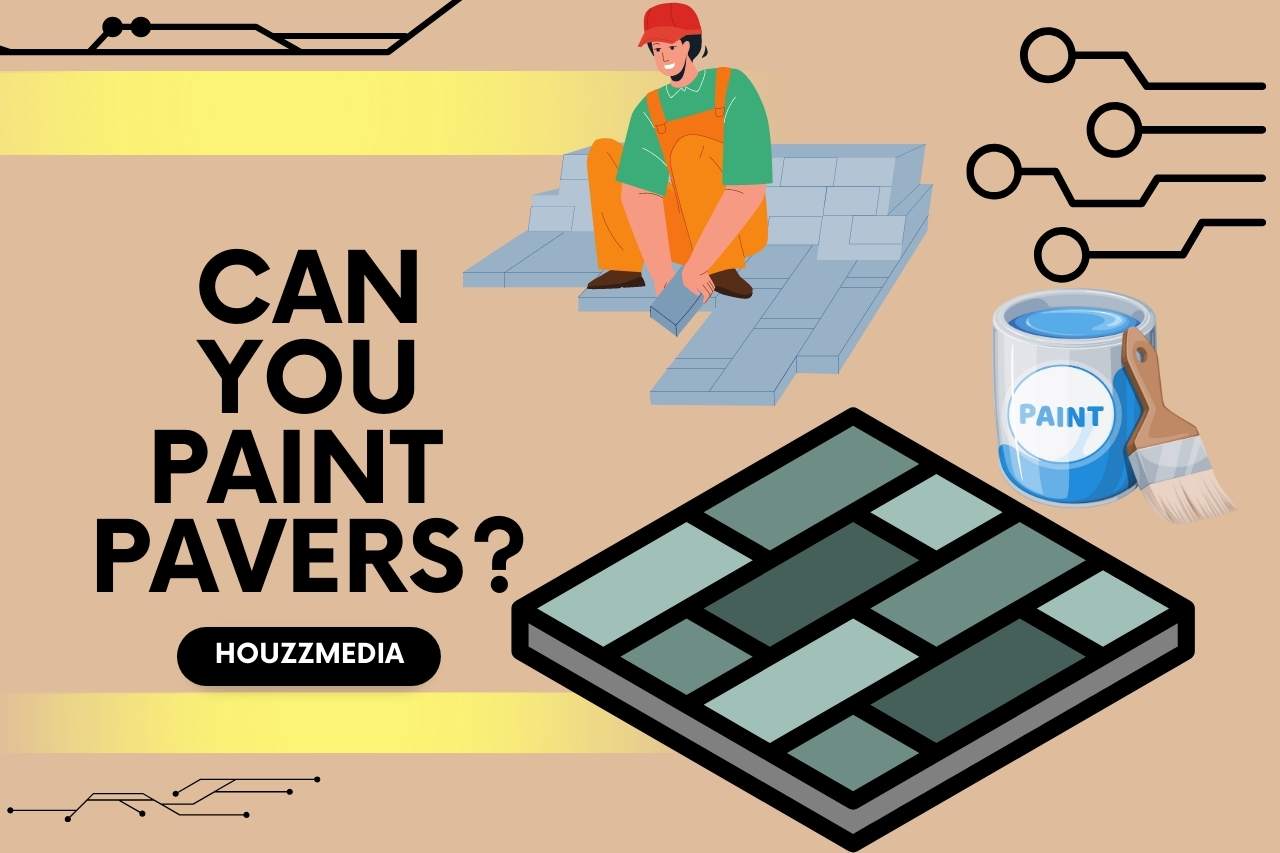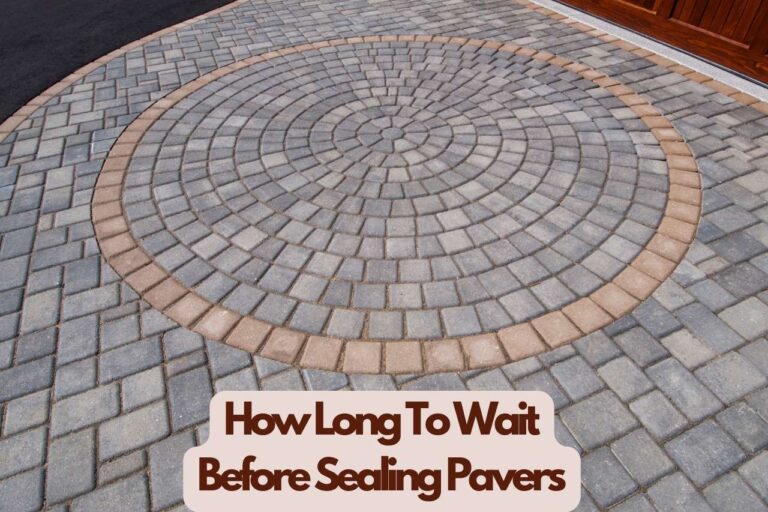Can you Paint Pavers? Enhance Your Outdoor Aesthetic!
The concrete pavers are susceptible to wear and tear like every other surface that vehicles, foot traffic, and animal traffic traverse. This wear-down process is accelerated by various other variables, which include wetting and drying, contraction and expansion, light and shade, etc.
That brings up the issue, can you paint pavers? This would offer an instant remedy to this wear and tear issue. Let’s read the full article to get solutions for all your concerns.
Is It Possible to Paint Pavers to Change Their Appearance?
Pavers are capable of being painted to change their appearance. Painting pavers are a terrific way to establish a certain style or update your outdoor space’s appearance. First, thoroughly clean the pavers to remove any debris, stains, or grime.
You can use a scrub brush or a power washer if you have water and a little detergent. Before moving on, give the pavers time to dry thoroughly. Before painting the pavers, think about correcting any cracks or uneven surfaces.
Fill in the cracks and sand the surface using the proper materials and methods. For the paint to adhere correctly, the surface must be level and smooth.
Choose a paint that can endure the environment and is appropriate for outdoor use. Find a concrete or masonry paint that was developed especially for outdoor use. These paints are long-lasting and specifically formulated to adhere well on paver surfaces.
What are the Benefits of Painting Pavers Instead of Replacing Them?
Painting pavers usually prove more affordable than replacing them. Paver replacement requires the purchase of new materials and, possibly, hiring professionals for installation, which may turn out costly.
Contrarily, painting requires few resources and might be a cost-effective solution. Pavers can be painted to modify their appearance and modernize the outside appearance of your house without requiring a major renovation.
It allows you to add colours, patterns, or designs that can go with your intended style or overall look. Your design options are more open to you when you colour your pavers.
You experiment with various colours, patterns, or textures to achieve the desired aesthetic. This flexibility encourages more creativity and customization than the constrained possibilities of changing pavers.
In most cases, painting pavers takes less time than getting rid of and replacing them. Painting can be finished quickly depending on the size of the space, allowing you to use the new space sooner.
Can you Use Regular Paint to Paint Pavers?
Painting pavers with regular paint is not advised. Regular paint could fail to adhere well to the surface of or resist external conditions on pavers, which are frequently composed of porous materials like concrete, stone, or other materials.
Regular paint may experience poor adherence, flake off, and wear out too quickly, necessitating frequent touch-ups or repainting.
Choosing a paint designed especially for masonry and outdoor surfaces is important when painting pavers. The paints they contain have been created to give longevity, resist weathering, and fade. They also bond well with porous objects.
Hardware or home improvement shops frequently carry concrete or masonry paints, which are made specifically to endure weather conditions and foot traffic.

What Factors Should be Considered Before Deciding to Paint Pavers?
Decide if your pavers will be constructed from brick, stone, or concrete. Not all surfaces can be painted; some might need special cleaning or a certain kind of paint. Additionally, one must evaluate the pavers’ state.
Instead of painting them if they are broken, significantly cracked, or have structural problems, it could be preferable to consider fixing or replacing them. Take into consideration of the pavers’ long-term objectives as well as your preferred aesthetic.
Painting might not be an appropriate option if you intend to modify the appearance of your outdoor area frequently or if you prefer the pavers’ appearance by themselves. Painting might be a good option to update the appearance, add colour or patterns, or create a special design.
Examine the weather and the pavers’ exact position. Pavers exposed to severe environmental factors, such as intense sunlight, freezing temperatures, or heavy rain, may need stronger coatings and other safeguards.
Ensure the paint you select has been designed for outdoor use and can endure the local environment and exposure levels.
Think about how long painted pavers will last and how much maintenance they require. Compared to the expense associated with other options, such as replacing the pavers or using different decorative methods like staining or stamping, compare the cost of painting the pavers. Ask yourselves if painting is the most cost-effective option for reaching your goals following your budget.
How to Paint Pavers?
The first step is thoroughly cleaning the pavers to remove debris, stains, or grime. Use a power washer or scrub brush with water and mild detergent to clean the surface. Before moving on, let the pavers dry. Before painting the pavers, think about correcting any cracks or uneven surfaces.
Fill the cracks and smooth the surface using the proper tools and materials. For the paint to adhere correctly, the surface must be level and smooth. Choose a paint that can endure the environment and is appropriate for outdoor use.
Look for concrete or masonry paint intended only for outdoor use. These coatings have been developed for durability and a strong bond with the paver surface. You may be required to use a primer before painting, depending on the colour you chose and the state of the pavers. The primer creates a more even finish and improves paint adhesion.
Apply the primer according to the manufacturer’s directions, if applicable. Apply the paint to the pavers uniformly using a roller or a paintbrush. Work your way around the surface, starting at one end whilst making sure to reach all of the corners.
Use many thin coats instead of one thick layer for improved adhesion and a smoother finish. Before adding the subsequent coat, let the previous one dry.
Applying a transparent sealant outdoors can help protect the painted surface and lengthen its lifespan. The sealer will offer additional defence against UV radiation, moisture, and wear. Apply the sealer as directed by the manufacturer, if desired.
How Long do Painting Pavers Last?
The paint quality, which kind of pavers, the climate and exposure conditions, and the quantity of foot traffic or use they receive are some variables that affect how long painted pavers last. Generally speaking, a well-painted surface can last several years with the correct preparation and upkeep.
It’s crucial to remember that painted pavers may deteriorate with time, especially in places with heavy activity.
Elements like intense sunlight, severe weather, freeze-thaw cycles, and heavy use might impact the long-term performance of the paint. Regular upkeep, such as routine cleaning and touch-ups, can help the painted finish last longer.
What Colour to Paint the Pavers?
Your personal preferences, the complete layout and aesthetic of your outdoor space, and the look you hope to create will all influence the colour you choose to paint your pavers. By choosing a colour that sticks out against the surroundings, you could want to create contrast.
This can make a strong statement and provide visual intrigue. For instance, a darker or more colourful hue for the pavers could include a striking contrast with a light-coloured house or surrounding landscape.
Neutral hues like grey, beige, or taupe can be a wonderful choice if you desire a more traditional and timeless appearance. Consider using bright colours like red, blue, or yellow to create a more dynamic and energetic environment. Brown or other earth tones, such as terracotta, can create a cosy, natural atmosphere.
Watch this one,
Video Credits – Resincoat
You May Also Like






